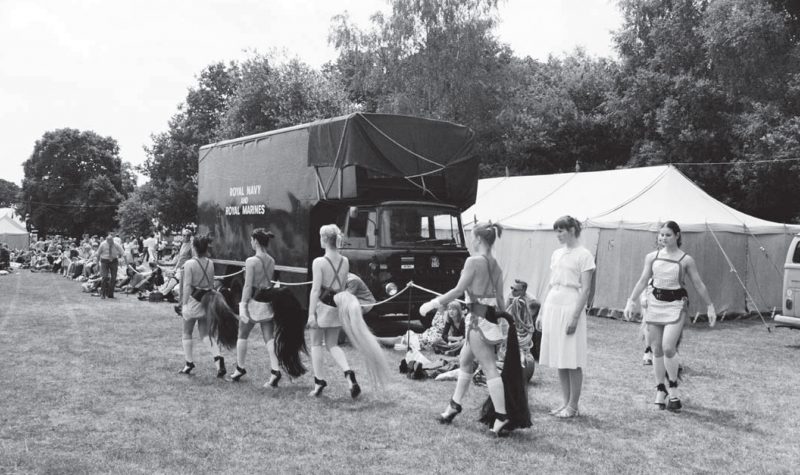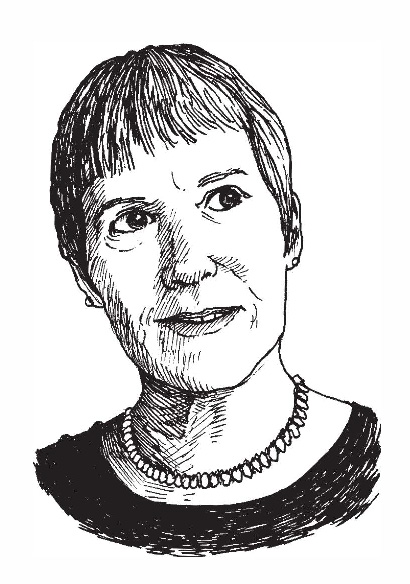I. HORSES, DEBUTANTES, BAROQUE, AND BALLET
Six women, girls really, march toward a dressage ring dressed in tiny tunics girdled with wide leather belts from which horsetails—real horse-tails—shake proudly. The dancers wear white gloves, white knee socks, and high heels made of hooves, requiring balletic balance. They parade past porcelain horse figures—the kind of statuettes you’d find in a girl’s bedroom—arranged by two prim attendants. A stunned photographer in bell-bottoms rushes to capture the scene, and the crowd stares. It is the summer of 1975 at the Southampton Horse Show in conservative rural England, and a staged piece of performance art called Quadrille is taking place instead of the dressage and show jumping the audience is here to see. As the women walk into the ring, they match each other’s stride: right foot, left foot, their gait somewhere between horse and human, and the camera zooms in for a close-up of hoof-as-high-heel. At the edge of the ring, a mounted rider watches while the women trot through formations. In a precise line, the dancers link arms, lift legs, and bow. They go through their paces and stand in pairs, forehead to forehead. The pose is intimate, nearly sexual.
The work of performance artist Rose English, Quadrille is easily one of the strangest things I’ve ever seen. Dressage is already a strange, mon-eyed world of riders in white jodhpurs, coattails, and top hats on horses with braided manes that move in precise, choreographed steps, akin to ballet. Watching the film of the 1975 performance, I can’t help but think of British novelist Angela Carter’s magical real-ism. She gave showgirls swans’ wings and reinvented fairy tales, using the form to ask larger questions about culture and women’s place in it. Now, looking at photographs of the audience that lined the ring several rows deep—women sitting with their hands clasped primly in their laps, men in dark suits and heavy-framed glasses, children with their legs dangling over the sides of their seats—it’s hard for me to imagine what they’re thinking, though one girl has her mouth open as if in shock.

What was Rose English trying to say about women and horses, sexuality and girls and their fetishism of horses? It’s surreal and sexy and not at all what I expect to see from feminist performance art—not in 1975, perhaps not ever. This is not Yoko Ono inviting her audience to cut her clothes from her body or...
You have reached your article limit
Sign up for a digital subscription and continue reading all new issues, plus our entire archives, for just $1.50/month.
Already a subscriber? Sign in





